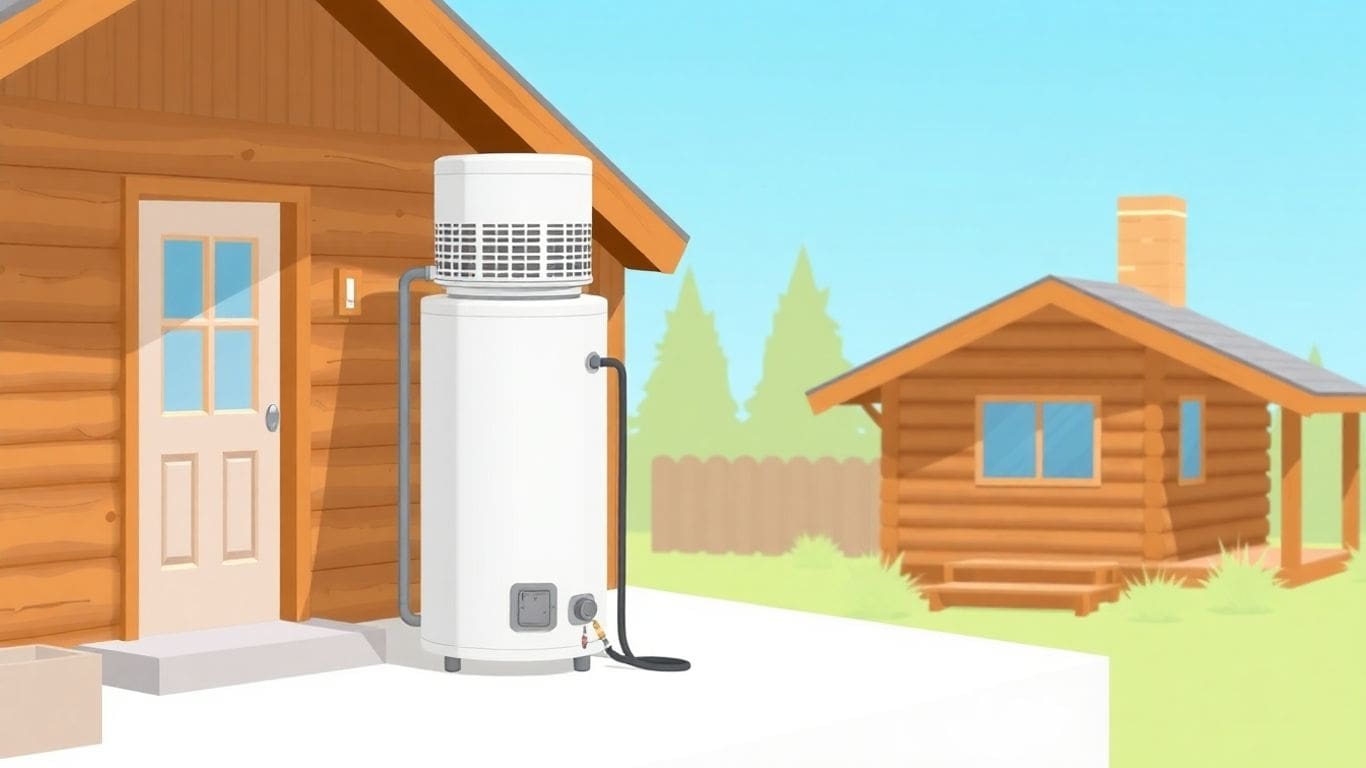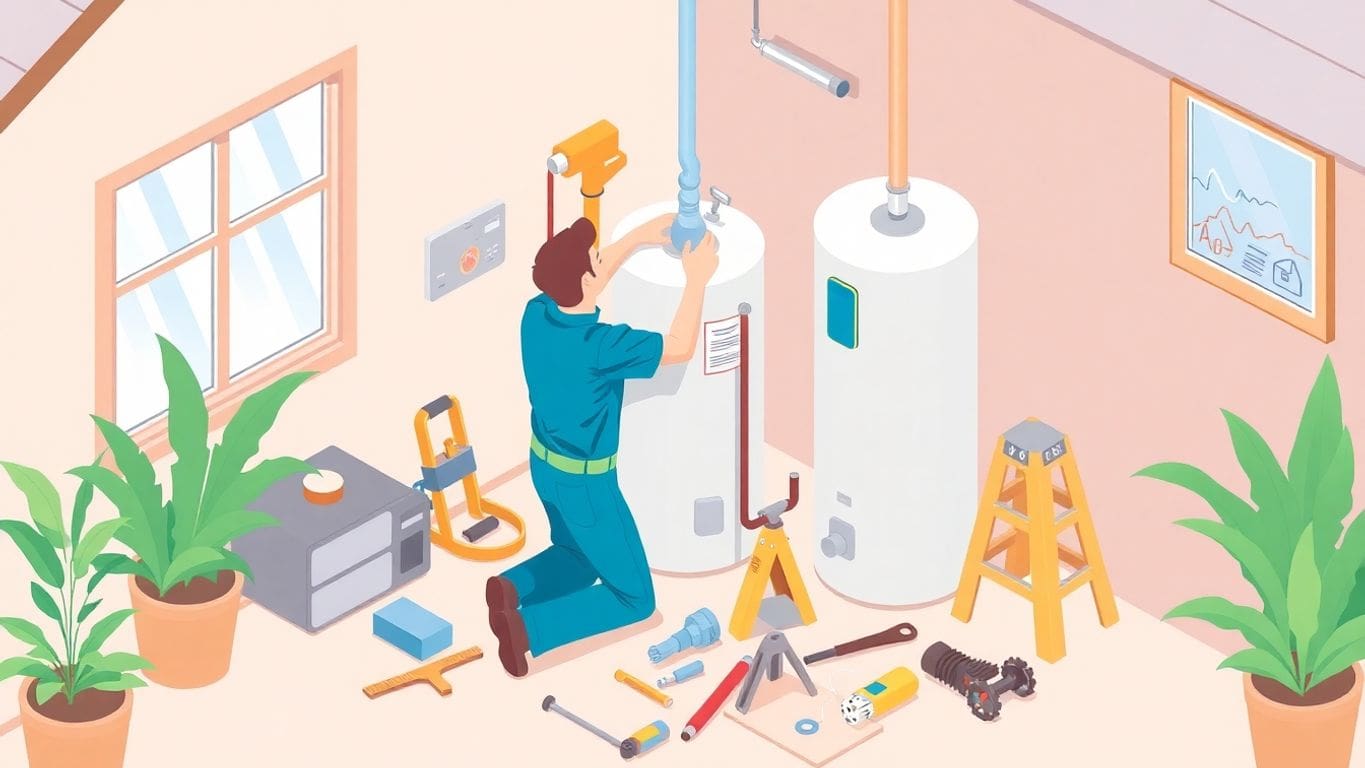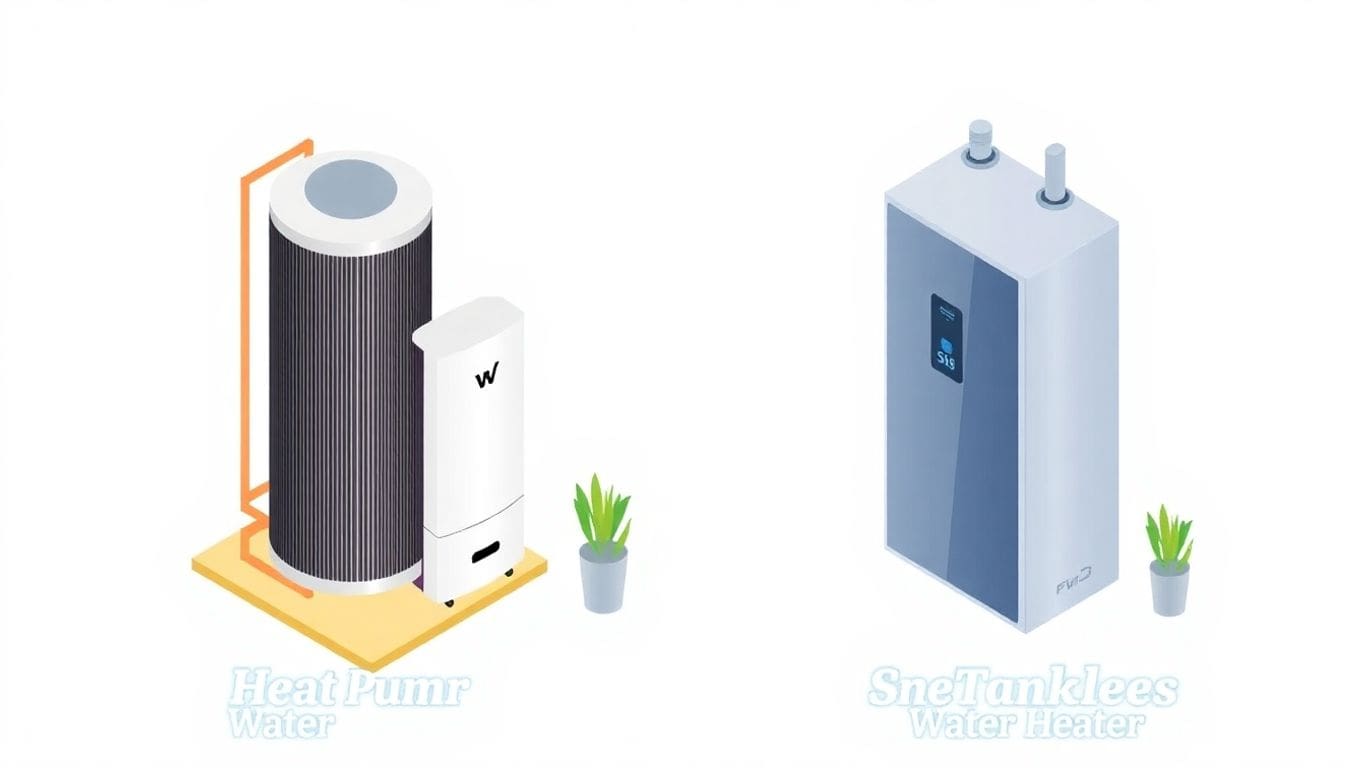
Ever thought about installing a hot water heater on its side? Seems like a space-saving idea, right? But before you go ahead, there are a few things you need to know. It’s not as straightforward as it looks. This article will walk you through the risks and requirements of horizontal water heater installation.
Before you start installing a water heater, there are a few things you should know. First, check the space where you want to put it. Make sure it has enough room. You need space around the heater for safety and maintenance. Also, think about how you will connect it to your home’s water and power supply. You’ll need some tools like a wrench, tape measure, and possibly a dolly if the heater is heavy.
There are several types of water heaters you might consider:
Each type has its pros and cons. Think about what works best for your home and budget.
A water heater has several important parts. Here are some you should know:
Understanding these basics helps you make better choices when installing or replacing your water heater. Knowing the parts and types can save you time and money in the long run.
You might wonder if you can lay a hot water heater on its side. The short answer is yes, but it’s not recommended. Water heaters are designed to stand upright. This position helps them work best and last longer. When you put them on their side, it might cause problems.
Most manufacturers say to keep water heaters upright. They design them to work that way. If you lay it down, it can mess with parts inside. This might void the warranty. So, it’s best to follow what the manufacturer says.
Some folks think you can save space by putting a water heater on its side. But this isn’t true. Doing this can lead to leaks or damage. It might even make the heater use more energy. Always check the facts before trying something new with your water heater.
Remember, keeping your water heater upright ensures it works properly and lasts longer. Always follow the guidelines to avoid costly repairs or replacements.
When you lay a water heater on its side, the internal parts can get messed up. These parts, like the heating elements and dip tube, are delicate. If they shift or break, your water heater might not work right or could even fail completely. It’s like trying to use a phone with a cracked screen—things might not function as they should.
Putting your water heater sideways can make it leak more easily. The tank’s lining and connections might not hold up well. When you stand it back up, you could find water dripping out, which is never good.
The insulation inside your water heater is meant to stay put when it’s upright. If the heater is on its side, the insulation can shift. This means your water heater might not keep water hot as well, leading to higher energy bills.
It’s important to think about these risks before deciding to install a water heater horizontally. You might save space, but it could cost you more in repairs and energy in the long run.
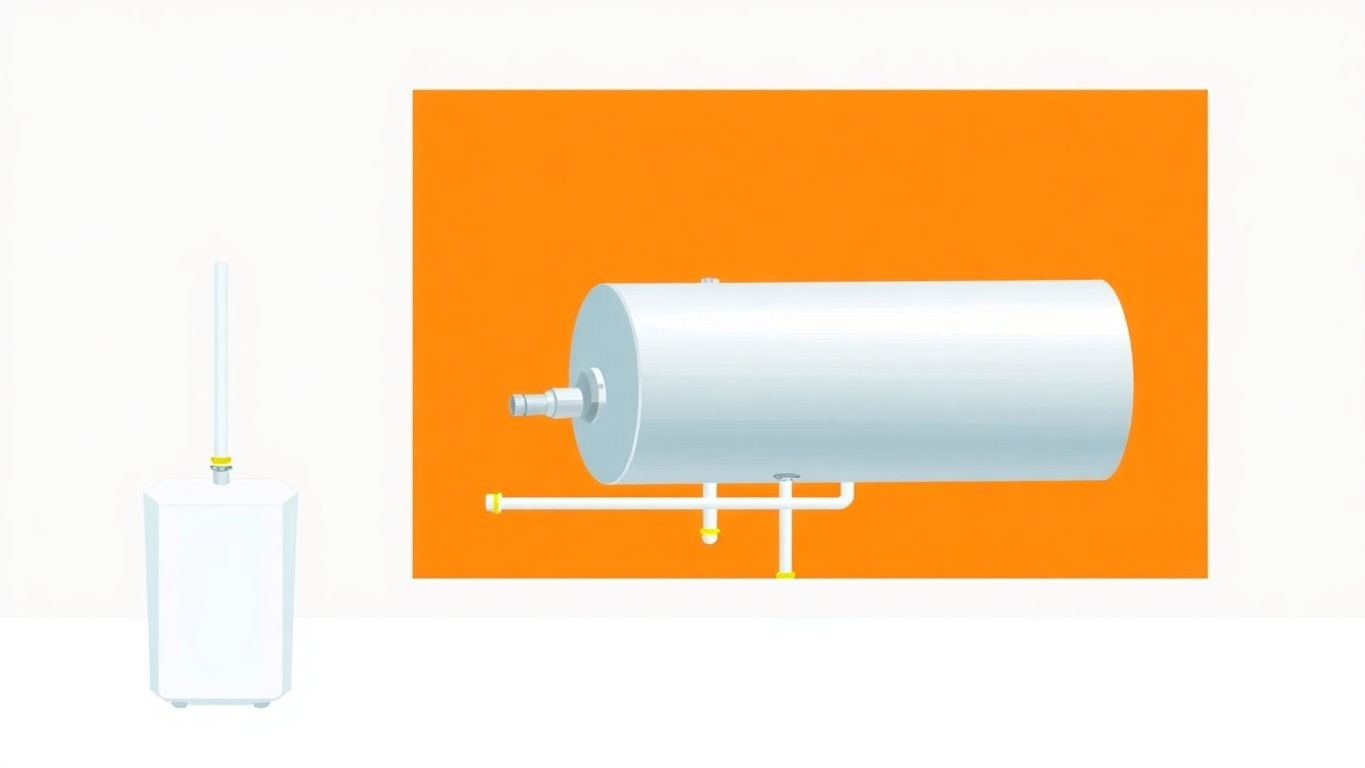
When you install a water heater on its side, proper drainage is a must. Water heaters have a pressure relief valve that lets out extra pressure. Make sure the discharge pipe is clear and ends near a drain. This way, any water released doesn’t cause a mess or damage.
To keep your water heater safe and sound, it’s important to secure it well. Use straps or brackets to hold the heater in place. This stops it from rolling or moving, especially if you live in an area prone to earthquakes.
After installation, keep an eye on your water heater. Look for any shifts in position or signs of leaks. A small leak can turn into a big problem if not fixed quickly.
Regular checks help catch issues early, saving you from costly repairs later.
By following these safety tips, you can help ensure your water heater runs smoothly and safely, even when installed on its side. Remember, always consult your water heater’s manual for specific guidance.
When choosing a water heater, understanding the differences between electric and gas models can help you make the right choice for your home. Each type has unique features and needs, so let’s explore what sets them apart.
Electric water heaters are often easier to install because they don’t need a gas line. They’re usually lighter, which makes moving them around a bit simpler. But, you should still handle them with care. Electric models have heating elements that can get damaged if jostled too much. Also, remember to disconnect the power before doing any work on them to stay safe.
Gas water heaters need a bit more attention. They have burners and gas connections, which means you need to be careful with the gas lines. If you ever smell gas, it’s important to check for leaks right away. Ventilation is also key with gas heaters. They need to be in a spot where fumes can escape safely.
Here’s a quick look at what each type needs:
| Feature | Electric Water Heater | Gas Water Heater |
|---|---|---|
| Installation Ease | Easier, no gas line | Needs gas line |
| Weight | Lighter | Heavier |
| Ventilation | Not required | Required |
| Safety Precautions | Power off before work | Check for gas leaks |
Choosing between electric and gas water heaters depends on your home setup and personal needs. Think about where you want to put it and how much hot water you use. Both types have their pros and cons, so pick the one that fits your lifestyle best.
Before you install a water heater, it’s important to know your local building codes. These rules ensure your installation is safe and efficient. They help prevent accidents and ensure your heater works properly. Every area might have different rules, so check with your local authorities to get the right information. Ignoring these codes can lead to fines or even having to redo the installation.
When buying a water heater, look for certification labels. These labels show that the heater meets safety standards. A certified water heater is tested to ensure it works safely and effectively. Certification is not just about safety; it can also affect your warranty. If your heater isn’t certified, you might not be covered if something goes wrong. So, always check for these labels before making a purchase.
Proper clearance and ventilation are key to a safe water heater installation. You need enough space around the heater to allow air to flow. This prevents overheating and ensures the heater works efficiently. Here’s a quick checklist to consider:
Keeping the area around your water heater clear is not just about following the rules. It’s about keeping your home safe and your heater running smoothly.
By following these guidelines, you can avoid many common problems with water heaters. Remember, a little attention to detail now can save a lot of trouble later.
Before you move your water heater, you need to get it ready. First, make sure it’s completely drained. This helps to reduce the weight and prevents water from sloshing around inside. You don’t want any leftover water causing damage. Also, disconnect any electrical connections if it’s an electric model. For gas heaters, make sure the gas lines are safely turned off and disconnected.
Picking the right vehicle is key to transporting your water heater safely. A truck or van with a flat, stable surface is best. You need enough space to lay the heater down if necessary, but remember, it’s always better to keep it upright. If you must lay it down, secure it tightly with ropes or straps to prevent it from moving around.
Once everything is set, drive carefully. Avoid bumpy roads and sudden stops. Smooth driving can prevent shifts and jolts that might harm the heater’s delicate parts. Keep an eye on the road, and be mindful of speed bumps or potholes.
Transporting a water heater isn’t just about getting it from point A to point B. It’s about making sure it arrives in one piece, ready to work efficiently in your home. Take your time, and don’t rush the process.
Remember, old water heaters can pose risks like leaks and increased energy costs. Upgrading to a new model can enhance energy efficiency and safety. Consider options like tankless or smart heaters when replacing your unit. Regular maintenance and timely replacement can prevent costly damage and ensure a steady hot water supply.
When you get a new water heater, it’s tempting to skip the manual. But these instructions are there for a reason. Following the manufacturer’s guidelines ensures your water heater works right and stays safe. If you ignore these steps, you might end up with a heater that doesn’t heat well or, worse, poses a safety risk.
A water heater needs to be stable. If it’s not secured correctly, it can shift and cause leaks or even fall over. Make sure you use the right brackets and straps. Check that everything is tight and won’t budge. A secure water heater is a safe water heater.
Before you call it a day, double-check everything. Make sure all connections are tight and there are no leaks. Test the pressure and temperature relief valve to ensure it’s working. Regular safety checks can prevent accidents and extend the life of your heater.
Taking the time to install your water heater correctly can save you from headaches down the road. It ensures efficient operation and keeps your home safe.
When replacing a 15-year-old water heater, consider key considerations like installation methods, safety, and financial aspects to avoid these common mistakes.
Keeping your water heater in good shape is all about regular check-ups. Make it a habit to inspect your heater every few months. Look for any signs of rust or leaks. If you spot any, it’s time to take action. Check the pressure relief valve, which helps control the pressure inside the tank. Lift the valve’s lever and let it snap back. You should hear a gurgling sound as the valve releases water into the drain tube. If not, the valve might need replacing.
Sometimes, your water heater will give you clues that it needs a little TLC. If your water isn’t as hot as it used to be or if it’s taking longer to heat up, there might be a problem. Strange noises like popping or rumbling can also be a sign of sediment build-up.
Keeping an eye on these signs can save you from bigger headaches down the road. A little attention now can keep your water heater running smoothly for years.
Sometimes, it’s best to call in the experts. If your heater is over 20 years old, it might be time to consider an upgrade. Frequent repairs, rising energy bills, and inconsistent hot water are clear signals. Also, if you’re not comfortable handling maintenance tasks yourself, a professional can help ensure everything is in top shape. They can spot issues that you might miss and offer solutions that keep your water heater working efficiently.
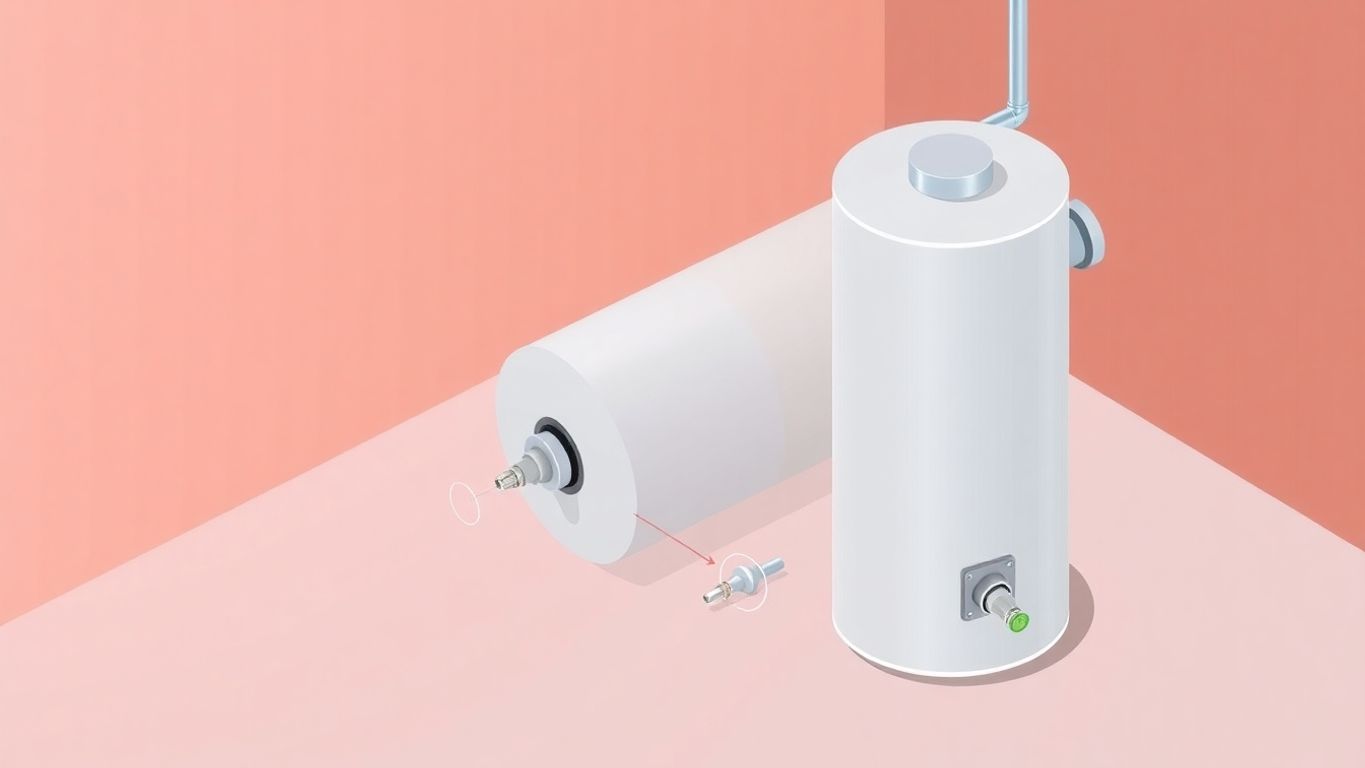
Pressure and temperature relief valves are like safety nets for your water heater. They help keep your home safe by stopping the water heater from getting too hot or too pressurized. If things go wrong, these valves open up to release the extra pressure or heat. This prevents the tank from bursting, which could cause a lot of damage. Without these valves, your water heater could become a ticking time bomb.
When installing these valves, follow these simple steps:
These steps help ensure the valve works properly, letting out excess pressure safely.
Sometimes, these valves might not work as they should. Here’s what to look out for:
Regular checks can help you spot these issues early. If you notice any problems, it might be time to call a pro. Keeping your water heater in good shape means checking these valves often. Regular maintenance is key to keeping your water heater working well and lasting a long time.
Remember, a well-maintained water heater is less likely to cause trouble. Keep an eye on those valves and make sure everything is running smoothly.
When setting up your water heater, it’s smart to put it close to where you’ll use hot water the most. This means less waiting for hot water and can save energy. For instance, placing it near bathrooms or the kitchen can make your life a bit easier.
Safety is key! Make sure your water heater is at least 24 inches away from anything that can catch fire. This includes things like curtains or wooden shelves. Also, avoid areas that are too damp or dusty, as these conditions can harm the heater over time.
Think about where you can easily reach the heater for repairs or maintenance. It’s important to have enough space around the heater so you can work on it if needed. If you’re putting it upstairs or in the attic, remember there are special rules and safety gear you’ll need to follow.
Picking the right spot for your water heater helps it work better and last longer. Plus, it makes maintenance easier down the road.
By choosing the right location, you ensure your water heater runs efficiently and safely. This can also help you avoid costly repairs in the future.
While it might be possible to lay a hot water heater on its side, it’s generally not recommended due to the risk of damaging internal parts and affecting its efficiency.
Putting a water heater on its side can lead to damage to its internal parts, increase the chance of leaks, and reduce its insulation effectiveness.
Yes, ensure proper drainage, secure the heater firmly, and regularly check for any shifts or leaks to maintain safety.
Yes, electric and gas water heaters have unique installation requirements. It’s important to follow the specific guidelines for each type to ensure safety.
You should understand local building codes, ensure the water heater is certified and labeled properly, and follow clearance and ventilation requirements.
To transport a water heater safely, prepare it by draining the water, choose the right vehicle, and drive carefully to prevent damage.
Avoid ignoring the manufacturer’s instructions, using improper securing methods, and skipping safety checks during installation.
Regular maintenance, watching for signs of problems, and knowing when to call a professional can help keep your water heater in good condition for many years.

